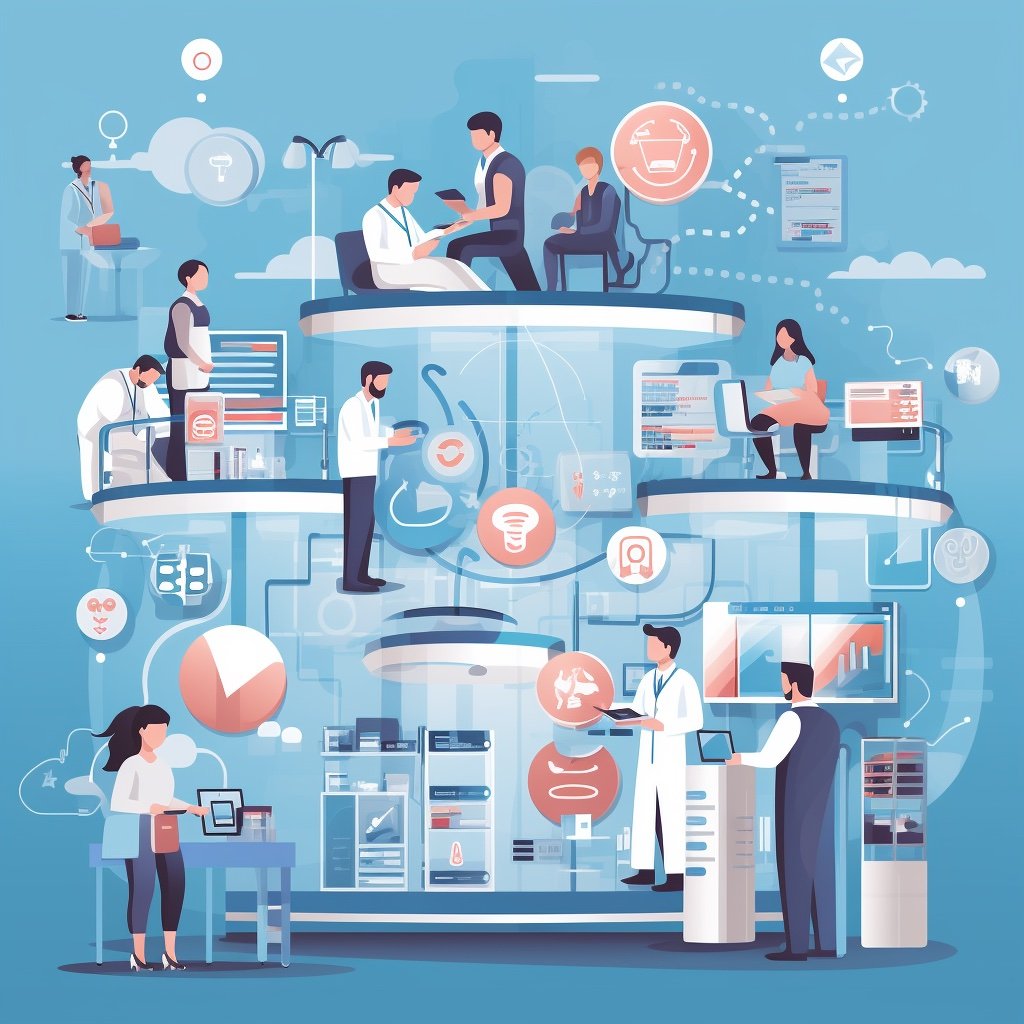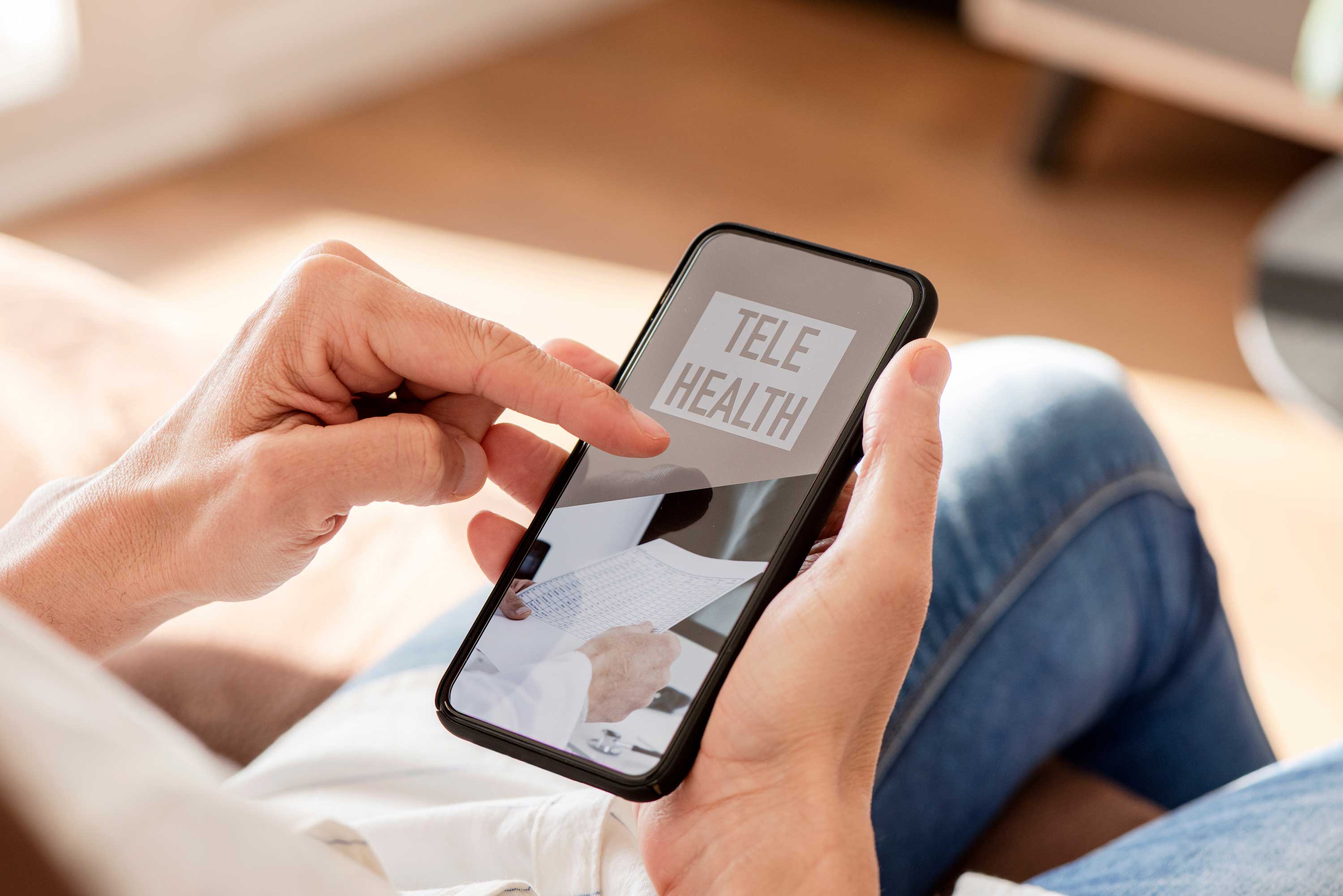
Is your healthcare system plagued by hellish patient access processes?
If you're like thousands of healthcare organizations, you're likely engulfed in the “Documentation Nightmare”—the slew of inefficiencies and errors that come from not having a single system of record—which creates debilitating staffing problems, including:
Relentless duplicate data entry. Your staff must enter the same patient information into multiple systems and portals. Research shows that healthcare staff spend up to 45% of their time on duplicate data entry and paperwork.
Difficulty obtaining a single and complete patient record. Essential personal health information—demographics, medical history, insurance, medication lists—are scattered across disparate databases and EHRs, which makes it challenging for your staffers to build comprehensive patient profiles. They must work furiously to obtain information, and critical details are prone to being missed or incorrectly recorded.
Constant interruptions and task-switching. Your staff frequently stops what they're doing to log into different systems, navigate interfaces, enter passwords, and refocus their attention. This creates incremental time losses that add up substantially over the course of a day or week. It can take up to 20-30 minutes to refocus after an interruption, according to studies.
Lack of continuity across platforms. Information may be recorded in non-standardized data formats and fields. Vital data is missing or conflicting across systems, which handicaps communication and efficiency across your entire patient access department.
Bottomless training: At Keona Health, we call it “Tedious Training"—and it's enough to drive any healthcare exec to their breaking point. If your patient access staffers require exhaustive training that takes weeks or months—usually because they rely on tribal knowledge (more on that here)—then your organization suffers from Tedious Training. Tedious Training drains massive resources from healthcare companies, slows down the appointment scheduling process, lowers service quality, and hampers access to healthcare.
Struggling to meet HIPAA compliance: Monitoring, auditing, and responding to privacy needs requires documenting access, usage, edits, disclosures, overrides, and other actions within each system and patient portal. Consolidating logs from different platforms is difficult, and some logs may lack detail, which makes end-to-end monitoring of patient data trails a chore for your patient access staff.
The Bottom Line:
Navigating this labyrinth of complex problems requires an army of highly capable and deeply trained staff, which many organizations can't afford. These organizations must therefore operate at deeply inefficient levels, which kills service quality, stunts scalability, pummels physician satisfaction, and intensifies patient leakage.
The biggest victims of the Documentation Nightmare are patients, who, because of your staff's sluggishness and inaccuracy, experience exhausting hold times, scheduling mistakes, and subpar service. All of these burdens increase the likelihood of negative health outcomes, according to a study from the National Library Of Medicine.
The solution: a healthcare CRM, the one-stop-shop for patient access
A healthcare CRM is a one-stop-shop which gives your staff a single system of record as they work. It’s a platform to manage all patient interactions, health records, and touchpoints.
Rather than navigating between a dozen different systems to schedule patients, obtain health history, send reminders, and other time-consuming redundancies, mundanities, and annoyances, your staff performs every function within a single unified healthcare CRM, which gives them all the information they need in real-time. The benefits of such a system are immense:
Benefits of a healthcare CRM for improving patient access at your health system
Minimized duplicate data entry and redundancies. Patient information is entered once and shared across all systems and departments. Your staff no longer must re-enter the same details into multiple platforms and portals. This saves considerable time—time better spent on improving your patient care and engagement.
A single, holistic patient record. All patient information—demographics, insurance, health history, billing details, medication records, test results—is accessible in one place. Staff have a complete view of the patient's information at their fingertips without having to track down records from different departments or systems. This enhances decision-making and ensures accurate health records.
Less task-switching. With a single system of record, staff can accomplish their tasks in one place without tedious task-switching, interruptions, and logging in and out of different platforms. This streamlines workflows and boosts productivity.
Standardized data and processes. Information is recorded in a consistent format, and processes are standardized. This reduces variabilities in data quality and in patient experiences. It's also far easier to train your staff on a single system: onboarding time plummets from weeks to 2.5 days.
Enhanced security and safety. Patient data is consolidated in one platform rather than scattered across many systems, which reduces vulnerabilities and makes it easier to meet HIPAA compliance.
Improved continuity of care. Thanks to seamless access to critical health information, your staff will see the complete details of a patient's treatment plan, special needs, and past interactions with healthcare organizations. This big-picture view facilitates continuity of care across visits and touchpoints.
Happier staff. Not grappling with dozens of cumbersome systems and redundancies works wonders for job satisfaction, morale, and retention. Your staffers tend to stick around when they have the tools they need to perform at their full potential.
Better health outcomes. Optimizing your staff's processes with a healthcare CRM transforms the patient experience. Rather than wait on hold for ~40 minutes, then deal with an inept staffer for another ~30 minutes, patients are quickly connected to a capable and knowledgeable staffer who can speedily and effectively resolve the patient's request. This first-rate service means patients get the care they need when they need it, which increases the likelihood of optimal health outcomes.
How to implement a healthcare CRM at your patient access operation
If you think your organization would benefit from a healthcare CRM, take the following steps:
- Define your goals for a healthcare CRM to guide your selection and implementation. This could include improving the patient experience, increasing efficiency, enhancing data sharing, and more.
- Assess your current systems, data integration, and workflows to understand how a new CRM may interface with them. Identify any gaps to address.
- Create a cross-functional team with patient access, revenue cycle, IT, marketing, care coordination, and executive sponsors.
- Choose a healthcare CRM vendor that aligns with your goals and can be a long-term partner. Compare based on needs, budget, EHR integration, customization, analytics, mobile capability, scalability, and other factors.
- Develop an implementation plan with your vendor and team including data migration, system integration, workflow changes, staff training, piloting, metrics, and phased rollout. Assign responsibilities.
- Consolidate patient data from different sources into your new CRM. Build interfaces to share data between systems. Ensure data accuracy during migration.
- Revise workflows based on new CRM capabilities. Provide staff training using vendor and in-house resources. Pilot with a small team if possible.
- Go live with the initial CRM implementation in steps according to your plan. Continue education and issue resolution. Gather feedback for ongoing improvements.
- Track key metrics related to your original goals to determine the CRM’s impact and value. Enhance based on metrics, staff/patient feedback, vendor upgrades, and technology interfaces.
- Maintain an up-to-date healthcare CRM and integration with regular vendor upgrades and improvements to interfaces with other software such as your EHR and patient billing systems. CRM optimization is continuous.
A healthcare CRM is transformative—if you're devoted to optimizing it
A healthcare CRM has the power to radically transform your patient access operation. But simply implementing new technology will not magically solve your staffing problems.
Success with a healthcare CRM requires an ongoing commitment to optimizing it. This means continually improving workflows, enhancing system integration, revising training, gathering feedback, tracking key metrics, and working closely with your CRM vendor to leverage upgrades and new features.
When patient access teams are devoted to optimizing their healthcare CRM, the results can be staggering:
- Staff productivity surges by up to 30% as redundancies vanish.
- Patient experiences improve substantially, with wait times slashed by up to 60% and scheduling accuracy rates topping 95%.
- Physician satisfaction spikes thanks to streamlined referral processes and continuity of care.
- Cost savings accumulate from lower staff turnover, less errors and missed appointments, optimized resources, and scaled operations.
- Organizational growth accelerates as the patient access operation achieves new levels of efficiency, service quality, and scalability.
But without continuous optimization, your healthcare CRM will fail to transform your processes and instead become just another piece of unutilized technology. The key to success is making it a living platform that evolves with your organization.
When healthcare executives fully embrace the power of healthcare CRM optimization, they position their patient access operation—and their entire organization—for a future of sustainable growth and excellence. The rewards of a healthcare CRM come not from implementation alone but from the dedication to keep improving and optimizing it for maximum strategic value.
To learn more about the biggest problems facing patient access and how to solve them ==>
Posted By

Stephen Dean is COO of Keona Health, where he’s spent 13 years building AI systems that transform patient access. Before “agentic AI” was a term, his team was deploying autonomous systems that now handle millions of patient conversations annually.
Related Post
September 13, 2024
the power of optimized patient self-scheduling imagine a healthcare practice where...



